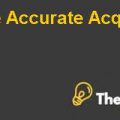
QUESTION # 01: What does the literature say about the main contributing factors to fund Performance?
Answer # 01:
NET ASSET VALUE:
The investor's main objective is to maximize the expected return of the portfolio he owns, within a certain level of risk. Net asset valuation (NAV) method in portfolio calculates per share market value of the fund. The per share price calculated by the net asset valuation method is usually used to bid the fund. Net asset per share value is calculated by using the formula,
The market value of fund asset shows the total cash and shares in the fund portfolio and liability is considered on the market value of the fund assets. The net asset value of a fund is calculated by using the closing prices of a portfolio at the end of each day. The stock price of the fund in the portfolio is set by market forces and these forces includes; market demand and supply, the economic factor and other political factors of the environment in which the fund is trading. Net asset valuation method realizes all the income and capital gain generated on the funds in the portfolio.
ANNUAL TOTAL RETURN:
The fund performance is measured in terms of annual return. Annual total return of the funds in the portfolio is calculated by considering all the related transactions that are interest cost, capital gains/loss, dividend, other realized cost and income on the funds in the portfolio.The annual total return is calculated by using the formula,
The annual total return is calculated as the net fund’s expense. Annual total return consists of different things that is income arising from the funds in the portfolio and the change in the fund prices over the period of time that is a capital gain on available funds in the portfolio.
Annual total return is the better option for the performance measurement of the funds in the portfolio as it considers all the aspectsof portfolio that is income, dividend and capital gain on the funds, while net asset value (NAV) only considers the market value of the fund and the liability arises on the funds in the portfolio.
QUESTION # 02: In efficient markets, can fund managers be expected to add value?
Answer # 02:
EFFICIENT MARKET:
Efficient market means that all the information regarding the stock or fund is available to all the public investors and all the information, whether it is public or private is reflected in the stock or fund price in the market, because when an investorinvests in the capital market, he wants to generate the maximum return on his investment. In efficient market all the prices reflect the true value of the funds or stock.Investors in the efficient fund market make money when they come to know that that price of the fund is undervalued, they purchase the certain fund and sell them in the open market when the prices of the fund become normal or overvalued in the market.
Market efficiency is based on some hypothesis, that is,a weak form of hypothesis, semi strong hypothesis and strong hypothesis.
The fund manager can add value in the weak form of hypothesis on the basis of fundamental analysis. Fundamental analysis means that analysis of financial statement, but no excess return can be generated by the fund manager in case of technical analysis, as technical analysis reflects the historical prices of the fund, which is not technically sound as the past data would not reflect the current value of the stock.
The other form of hypothesis is semi strong hypothesis, in which prices of the stock are reflected by the publicly available information. The fund managercannot add value in the semi strong form of efficient market because fundamental and technical analysis are not reliable to generate excess return in this form of market.Excess. returns can be generated in semi strong hypothesis if all the previous news is analyzed properly and it considers all this newsbefore the investment in the fund.
Meanwhile, in the strong form of hypothesis all the market prices are reflected by all the information in the market either it is publicly available or private. Strong form hypothesis prices of the stock reflect the true value of stock or fund.Fund manager and any other person cannotgenerate theexcess returnsin the long termin this form of market......................
This is just a sample partial case solution. Please place the order on the website to order your own originally done case solution.
Set in the fall of 2005, this case relates to the remarkable results of a value the trust, a mutual fund managed by William "Bill" Miller III at Legg Mason, Inc case describes the investment style of Miller, whose record with the value of the Trust beat S & P 500 14 years row. Challenges for students is to assess the effectiveness of the fund, according to the sources of its success, and decided on the stability of the performance of Miller. According to the introductory nature of the case, the analysis does not require numerical calculations. The instructor should not be deceived, however: the absorption of capital market background and implications of financial concepts in the case of fully take beginner. This case updates and replaces "Peter Lynch and Fidelity Magellan Fund" and "Fidelity Magellan Fund, 1995". Case is designed for use in the initial stages of finance course. It provides a non-technical introduction to the U.S. equity markets, and lays the basis for some of the basic concepts in finance.
This Darden study. "Hide
by Robert F. Bruner and Sean Carr Source: Darden School of Business 17 pages. Publication Date: November 14, 2005. Prod. #: UV1371-PDF-ENG













